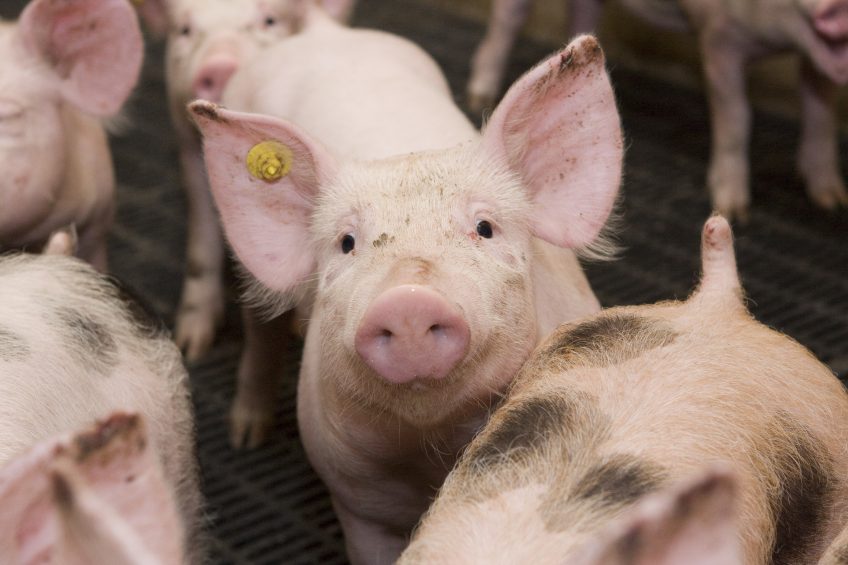Pig behaviour linked to sanitary conditions and diets

There is a connection between damaging behaviour in pigs, sanitary conditions and diet formulations. How exactly, was presented by Dutch researchers recently.
The researchers, attached to Wageningen University, the Netherlands and De Heus Animal Nutrition, published their outcomes recently in an article in Plos One.
Reducing crude protein levels in pigs
The scientists described that the tendency to reduce crude protein levels in pig diets to increase protein efficiency may also increase the occurrence of damaging behaviours such as ear and tail biting. This, they said, is particularly for pigs kept under sub-optimal health conditions.
In the article, the researchers studied 576 tail-docked growing-finishing entire male pigs in 64 pens, subjected to low vs. high sanitary conditions, and fed a normal crude protein diet vs a low crude protein diet (80% of normal crude protein diet) ad libitum, with a basal amino acid profile or supplemented amino acid profile with extra threonine, tryptophan and methionine.
Vaccination and antibiotics for pigs
The high sanitary condition pigs were vaccinated in the first 9 weeks of life and received antibiotics at arrival of experimental farm at 10 weeks, after which they were kept in a disinfected part of the farm with a strict hygiene protocol. The low sanitary condition pigs were kept on the same farm in non-disinfected pens to which manure from another pig farm was introduced fortnightly.
At 15, 18, and 24 weeks of age, prevalence of tail and ear damage and of tail and ear wounds was scored, they described. The article goes on describing that, at 20 and 23 weeks of age, frequencies of biting behaviour and aggression were scored for 10×10 minutes per pen per week.
Prevalence of ear biting in pigs
The prevalence of ear damage during the finisher phase (47 vs. 32% of pigs) and the frequency of ear biting (1.3 vs. 1.2 times per hour) were increased in low sanitary conditions compared with high sanitary condition pigs.
This effect on ear biting was diet dependent, the researchers observed, however, the supplemented amino acid profile reduced ear biting only in low sanitary condition pigs by 18% (sanitary condition × amino acid profile). The prevalence of tail wounds was lower for pigs in low sanitary conditions (13 ± 0.02) than for pigs in high sanitary conditions (0.22 ± 0.03) in the grower phase.
Low crude protein diets and biting behaviour
Regardless of amino acid profile or sanitary status, low crude protein diet pigs showed more ear biting (+20%), tail biting (+25%), belly nosing (+152%), other oral manipulation directed at pen mates (+13%), and aggression (+30%) than normal crude protein diet pigs, with no effect on ear or tail damage.
In conclusion, both low sanitary conditions and a reduction of dietary protein increase the occurrence of damaging behaviours in pigs and therefore may negatively impact pig welfare. Attention should be paid to the impact of dietary nutrient composition on pig behaviour and welfare, particularly when pigs are kept under suboptimal (sanitary) conditions.
This article was authored by Yvonne van der Meer, Wageningen University, the Netherlands and De Heus Animal Nutrition, the Netherlands; and Walter J.J. Gerrits, Alfons J.M. Jansman, Bas Kemp and J. Elizabeth Bolhuis, all attached to Wageningen University, the Netherlands.












